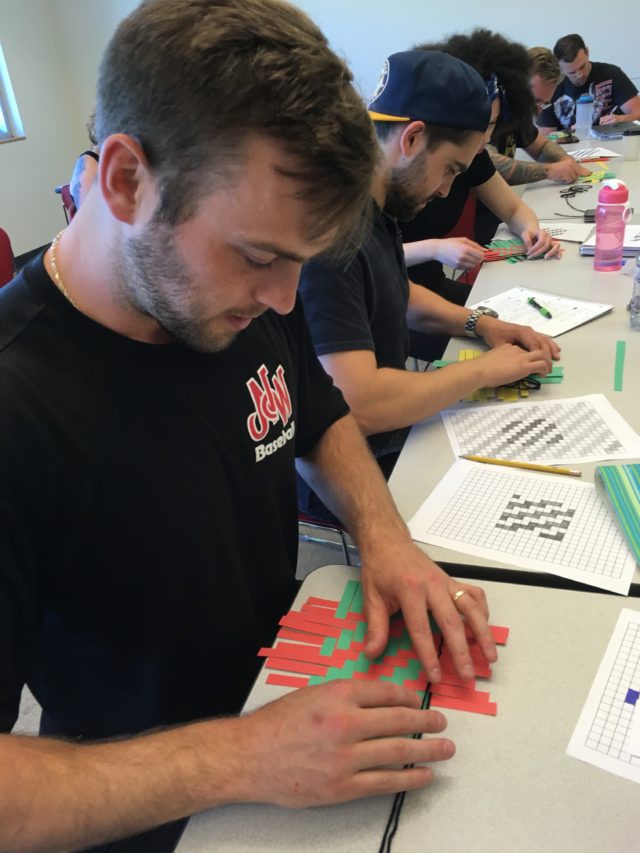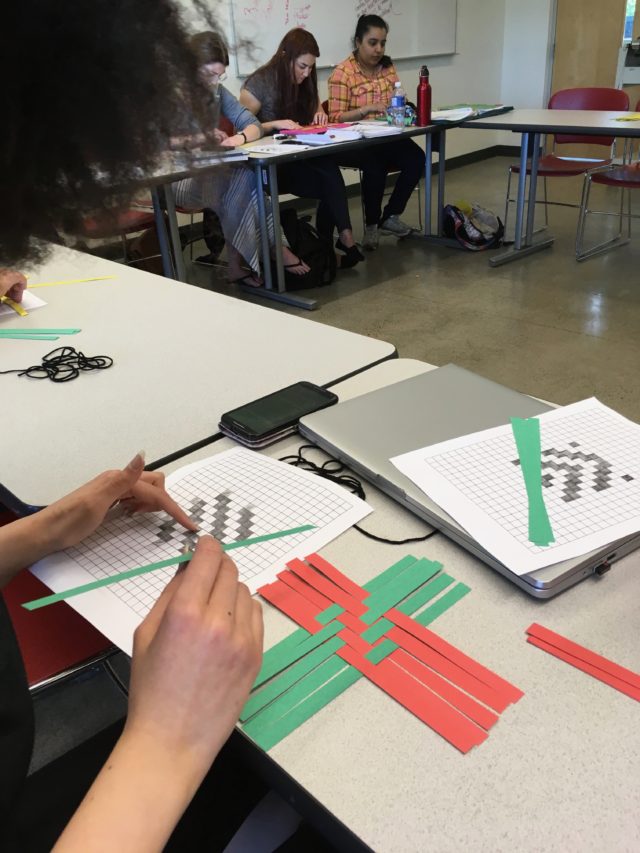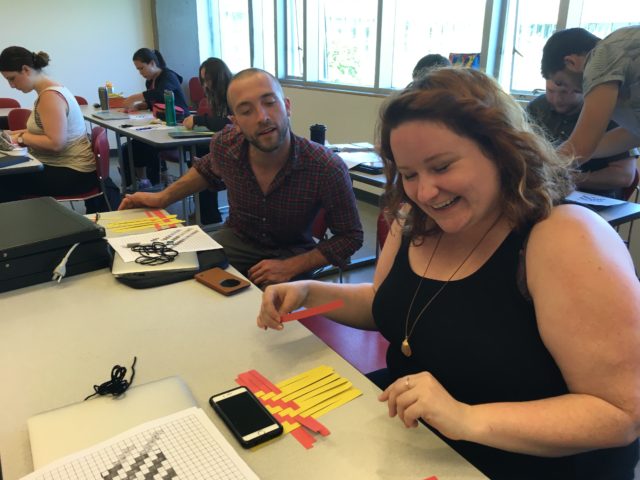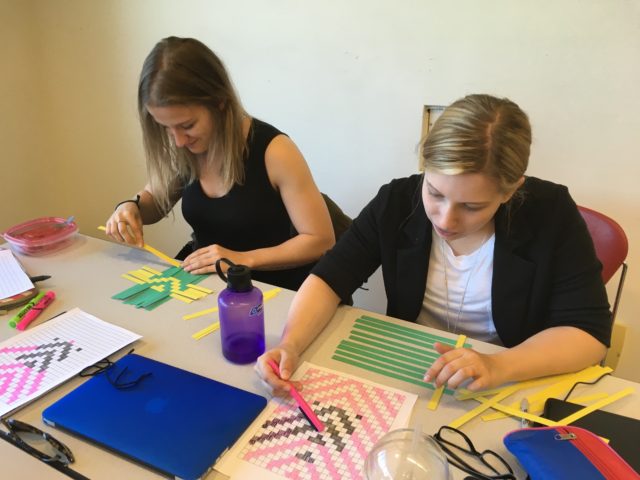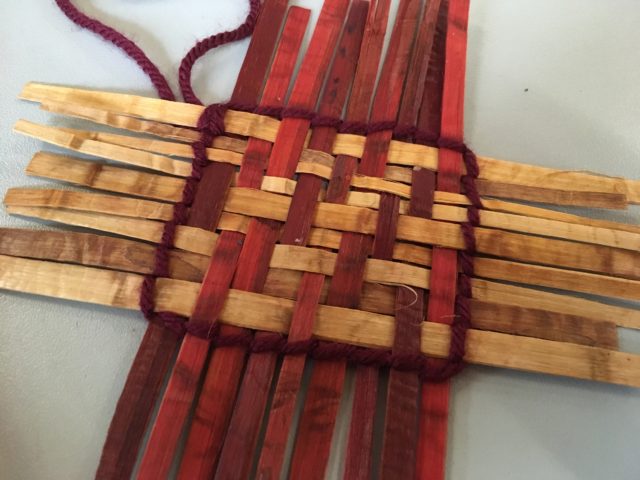My Quantitative Inquiry Question
EDUC 454 D100 – Week 3 – May 23, 2017
“How do you know when enough is enough?”
My quantitative inquiry project is about cedar bark harvesting. Today I shared my teaching experience and Math 8 Project from about 10 years ago titled “Math Embedded: A Tribute to Susan Point.” I showed a few images of Susan Point’s spindle whorls from the Vancouver Art Gallery and compared them to those made by my students who were demonstrating their understanding of linear and rotational symmetry. I am so proud of the work my students did back then, which inspired me to pursue other interests in the First Peoples, mathematics education, and now… environmental education with EDUC 454 D100. This year I want to learn more about cedar, weaving, cedar bark harvesting, and culturally modified trees.
Within this context… my quantitative inquiry question is “How do you know when enough is enough?” I was curious how the First People new how much bark to take from a tree without harming it, but also to take enough so that they could weave the baskets, clothing, and other items with the bark harvested. I love weaving. I have a small collection of cedar baskets that I brought into class and looking at them makes me even more enamoured by the craft because it took me forever to weave this 9×9 matrix as seen in the photo above. This bark was so beautiful. It was harvested a year ago. This is from the 7th Annual UBC Aboriginal Math K-12 Symposium.
I would like thank Dr. Cynthia Nicol for being so gracious and letting me attend. I presented at the symposium a few years ago presenting “Math Embedded: A Tribute to Susan Point.” This year’s symposium was about CEDAR. How serendipitous was that? I had to go. We learned about reconciliation and mathematics education. I just loved it. We did a timeline activity, then a map activity. These were two exceptional interdisciplinary activities that incorporated First Nations history, geography, mathematics education together. The audience was challenged by the tasks.
The keynote speaker was Alice Guss from the Squamish Nation. I just loved listening to her talk. She was an outstanding storyteller. I loved her take on cedar and appreciated how important cedar was to the Coast Salish. During her talk, she asked the audience if we had any questions. Of course I did… I wanted to ask my inquiry question… and, I did. “How do you know when enough is enough?” She answered, “you don’t. You use two hands. You may get 30-feet, 40-feet, or 50-feet… but the tree decides.” Wow. She modelled the process on the pole beside her on stage. The imagery was powerful, but also the idea that the tree as agency and action. This was the first talk from Dr. Cynthia Nicol about our relationship with the environment.
The final task of the symposium was weaving cedar. I loved the math that was embedded in this activity. We had to complete patterns by shading sheets of graph paper then weave our pattern using cedar. I had never done this before. I have made a cedar bracelet before, but never weaved a pattern like this before. This took collaboration, time, patience, and problem solving to get this done. And yes, I even asked the keynote for some help on how to twine my pattern together. I just loved the experience and had to share this with my EDUC 454 class. If you see below, they were just as engaged as I was, but they had to unfortunately weave with bristol board instead. That said, I believe the math experience was similar for may students.
I appreciated the class participation. I still wrestling with their math efficacy and how they can build student math efficacy, even though they do not intend to become secondary mathematics teachers. We had a great discussion today about math efficacy and I wonder how we can shake our habits so that we can shift the mindset about mathematics for the next generation of learners. In this weaving activity, some math anxiety was present… some dexterity frustrations… but overall joy from the learning experience. It was an excellent opportunity to connect with the students.
I look forward to my next learning about cedar. My next adventure is the Sea-to-Sky Gondola. I also look forward to the quantitative projects my students create to demonstrate their learning that is interdisciplinary, which includes environmental education, mathematics education, and their subject speciality. It should be good.

